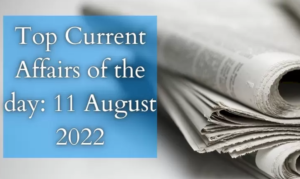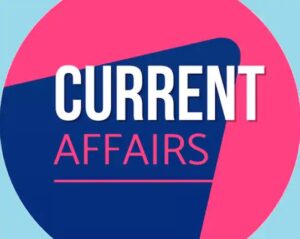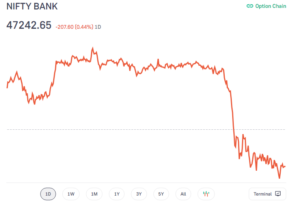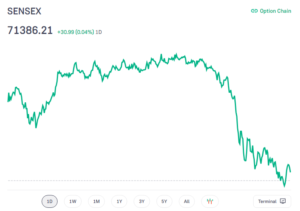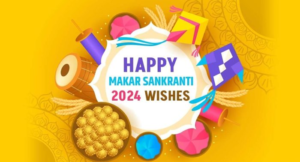
Global Wind Day 2022 celebrates globally on 15th June
On 15th June, Global Wind Day is celebrated across the world, annually and it is marked as a day of discovering the possibilities of wind power. It is a day for discovering wind, its power and the possibilities it holds to reshape our energy systems. This day is dedicated to learn about wind energy and its potential to reshape energy systems, decarbonizing economies and boosting employment as well as growth. The purpose of this day is to increase public knowledge of wind energy and its uses.
Global Wind Day 2022: Theme
Global Wind Day 2022 is based on the theme is celebrate to enjoy the benefits of Wind energy and providing education to the individuals about the power and potential of wind energy to change the world.
Global Wind Day 2022: Significance
With the threat of global warming approaching, it is more significant than ever to make optimal use of energy sources such as wind. As per the globalwinday.org wind energy is now a mature and widely used technology. In the previous year, the wind industry installed more than the gas and coal sectors combined in the EU. It also has the installed capacity to power 87million households or 15% of the region’s electrical demand. With such potential, the significance of day increases enormously, as more people must be aware of the advantages of wind energy. This initiative is a collaboration between several nations.
Global Wind Day: History
The First Wind Day was commemorated in 2007 by the European Wind Energy Association (EWEA). In 2009 the EWEA collaborated with the Global Wind Energy Council (GWEC) and made it a global event. WindEurope and GWEC from then celebrate this day together. In 2012, the clubs promoted photography competition where people were encouraged to capture the best picture keeping in mind the theme of the year.
GoI launched Agnipath military recruitment scheme
The Indian government has introduced the Agnipath Military recruitment scheme, a 4-year tenure scheme for the defense troops. The scheme will facilitate the induction of more troops for shorter-term tenures. The scheme has been planned and is being implemented by the Department of Military Affairs.
Here are the key details of the scheme:
- ‘Agnipath’ is a short-term service youth recruitment scheme for the armed forces that operates across India. Agniveers will be the name given to those chosen for the scheme, and they will serve in a variety of terrain such as deserts, mountains, land, sea, and air.
- Approximately 45,000 people between the ages of 17.5 and 21 will be inducted into the service for a four-year period under the scheme. The recruitment process will begin in the next 90 days, with the first batch expected to be completed by July 2023.
- The selection will be made using a centralised online method. Agniveers will be required to have the same educational requirements as normal officers in the armed forces.
- Women will be inducted in the ‘Agnipath’ scheme as well.
- After four years, Agniveers would be given the option to voluntarily apply for registration in the permanent cadre. These applications will be evaluated based on merit and service performance. It’s possible that up to 25 per cent of submissions will be accepted.
- Agniveers will be hired for four years under the ‘Agnipath’ scheme and will get intensive military training. They will be given a monthly wage of ₹ 30,000 to ₹ 40,000 per month, plus allowances.
Monthly wages:
NeSDA Report 2021: Kerala topped among states
The National e-governance service delivery assessment (NeSDA) report 2021 was published recently. The report was released on June 13, 2022. NeSDA helps the respective governments improve their delivery of citizen centric services and shares best practices across the country for all States, UTs and Central Ministries to emulate. DARPG embarked on the second edition of NeSDA study in January 2021.
NeSDA report 2021: Significance
NeSDA helps the respective governments improve their delivery of citizen centric services and shares best practices across the country for all States, UTs and Central Ministries to emulate.
Sectors Covered: NeSDA 2021 covers services across seven sectors
- Finance,
- Labour & Employment,
- Education,
- Local Governance & Utility Services,
- Social Welfare,
- Environment and
- Tourism sectors.
NeSDA report 2021: Key points
- Top Rankers: Overall, in NeSDA 2021, Kerala had the highest overall compliance score amongst all the States and UTs.
- Among UTs: Jammu and Kashmir, assessed first time in NeSDA 2021, scored highest among all UTs for six sectors.
- Among North-east and Hill States: Meghalaya and Nagaland are the leading state portals with an overall compliance of 90% across all assessment parameters.
- Among Remaining State Category: Kerala, Odisha, Tamil Nadu, Punjab, Karnataka and Uttar Pradesh had a compliance of more than 85% among the remaing state category.
Highest Improvements:
- Among North-East and Hill States: The highest-ranking states of Meghalaya and Tripura showed improvement across all sectors compared to NeSDA 2019.
- Among Remaining State Category: The overall score of Tamil Nadu increased the most in 2021 compared to 2019. Andhra Pradesh, Kerala, Punjab, Goa, and Odisha also improved the compliance of their services portals by 100%.
1st-ever India-EU Security and Defence Consultations held in Brussels
First-ever India-European Union (EU) Security and Defence Consultations held in Brussels, Belgium. The consultations were held in accordance with the decision taken at India-EU Summit in July 2020. Consultations were co-chaired by Joint secretary of Ministry of Defence Somnath Ghosh and Joint Secretary (Europe West) of Ministry of External Affairs (MEA) Sandeep Chakravorty from India and Director Security and Defence Policy, from European Union.
During the consultations:
- Discussions covered the evolving security situation in Europe, Indo-Pacific and India’s neighbourhood. Both the sides noted number of positive developments in security and defence cooperation area in recent years.
- The Maritime Security Dialogue met in February 2022, for the second time. First-ever joint naval exercises between India and EU were held in June 2021.
- The two sides also discussed various means of increasing India-EU cooperation on maritime security, implementation of the European code of conduct on arms export to India’s neighbourhood, cooperation in co-development and co-production of defence equipment including India’s participation in Permanent Structured Cooperation (PESCO).
Important takeaways for all competitive exams:
- European Union Founded: 1 November 1993, Maastricht, Netherlands;
- European Union Headquarters: Brussels;
- President of the European Union Commission: Ursula von der Leyen;
- President of the European Union Parliament: Roberta Metsola;
- President of the European Council: Charles Michel.
Indian Bank launched digital renewal scheme for KCC holders
Indian Bank launched its KCC Digital Renewal scheme, enabling eligible customers to renew their Kisan Credit Card accounts via digital modes. The initiative is part of the bank’s digital transformation under project ‘WAVE’ – World of Advanced Virtual Experience. The account renewals can be done using Indian Bank’s IndOASIS mobile app and internet banking. Out of the total agriculture portfolio of Rs 88,100 crores, KCC constitutes Rs 22,300 crores with 15.84 lakh customers.
The bank expects the digital initiative to come in handy for customers and intend to enhance the threshold limit to cover more KCC account holders. In April this year, the bank had launched its first end-to-end digital product – Pre-Approved Personal Loan.
Important takeaways for all competitive exams:
- Indian Bank Founded: 15 August 1907;
- Indian Bank Headquarters: Chennai;
- Indian Bank CEO: Shri Shanti Lal Jain;
- Indian Bank Tagline: Taking Banking Technology To The Common Man.
Delhi government collaborates with the UNDP, builts oxygen production facility
To supplement oxygen supply capacities, the Delhi Government, in collaboration with the United Nations Development Programme (UNDP) India, has built an oxygen producing facility at G. B. Pant Hospital in New Delhi. Kanni Wignaraja, UN Assistant Secretary General and UNDP Regional Director for Asia and the Pacific, inaugrated the oxygen plant in the presence of G. B. Pant Hospital Medical Director Dr. Anil Agarwal. Ms. Wignaraja also paid a visit to the COVID-19 Vaccination Centre at Lok Nayak Jai Prakash Narayan Hospital before to the opening. She talked with the personnel and observed Co-operations, WIN’s which support one of India’s largest vaccination programmes.
The oxygen plant produces about 1,000 litres of oxygen per minute using pressure swing adsorption (PSA) technology. It will serve about 750 hospital beds, including ventilator-assisted beds and the Intensive Care Unit. The hospital is a multi-specialty tertiary care facility that receives referrals from all around the country.
What is UNDP?
The United Nations Development Programme (UNDP) is a UN agency entrusted with assisting countries in eradicating poverty and achieving long-term economic and human development. It is the largest UN development aid agency, with operations in 170 countries and headquarters in New York City.
Important Takeaways For All Competitive Exams:
- UN Assistant Secretary General and UNDP Regional Director for Asia and the Pacific: Ms. Kanni Wignaraja
- G. B. Pant Hospital Medical Director Dr. Anil Agarwal
Amara Raja to open a green hydrogen fuel outlet for NTPC in Leh
In Leh, Ladakh, Amara Raja Power Systems will build the country’s first green hydrogen fueling station for the National Thermal Power Corporation (NTPC). According to the Amara Raja company, the pilot project would create a minimum of 80 kg of 99.97 percent pure hydrogen each day, which will be compressed, stored, and delivered. The contract has been awarded to NTPC, which expects to operate five hydrogen fuel cell buses in the region.
KEY POINTS:
- If completed successfully, the project will usher in an age of emission-free transportation in and around Leh, and India will join a select club of countries that are leading the way in green mobility.
- Amara Raja will run and maintain the fueling station for three years at a cost of Rs 41 crore. Fuel prices, according to business sources, cannot be discussed at this time.
- By dividing water into hydrogen and oxygen using an electrolysis process fueled by renewable energy sources, green hydrogen will be produced. There will be no carbon imprint from the hydrogen produced this way.
- The project will be set up in Leh’s severe conditions, which include temperatures ranging from minus 14 to + 20 degrees Celsius at a height of 3,600 metres above sea level.
- This will be a prelude to large-scale green hydrogen mobility and storage initiatives, as well as a vital tool for analysing and deploying fueling stations around the country, as part of the National Hydrogen Energy Mission.
About NTPC:
National Thermal Power Corporation (NTPC) Limited is an Indian public sector undertaking. It was involved in the generation of power as well as other related operations. It is a statutory corporation that was established under the Companies Act of 1956 and is owned by the Ministry of Power of the Government of India. The company’s headquarters are located in New Delhi. The generation and distribution of power to India’s State Electricity Boards is the fundamental role of NTPC.
BWF Indonesia Masters 2022: Check the list of winners
The 2022 Indonesia Masters badminton tournament (officially known as the Daihatsu Indonesia Masters) took place at the Istora Gelora Bung Karno, Jakarta, Indonesia. Olympic champions Viktor Axelsen and Chen Yufei clinched the respective men’s and women’s singles titles at the BWF Indonesia Masters 2022.
BWF Indonesia Masters 2022: Check the list of winners
| Category | Winners |
| Men’s singles | Viktor Axelsen (Denmark) |
| Women’s singles | Chen Yufei (China) |
| Men’s doubles | Fajar Alfian (Indonesia) & Muhammad Rian Ardianto (Indonesia) |
| Women’s doubles | Chen Qingchen (China) & Jia Yifan (China) |
| Mixed doubles | Zheng Siwei (China) & Huang Yaqiong (China) |
IWF Youth World Championships: Saanapathi Gurunaidu wins gold
At the IWF Youth World Championships in Leon, Mexico, Indian weightlifter Saanapathi Gurunaidu won gold in the men’s 55 kilogramme category event. On the first day of the IWF competition, two other additional Indian weightlifters, Vijay Prajapati and Akansha Kishor Vyavhare also won medals, they won the silver medals.
KEY POINTS:
- With a total lift of 230 kilogrammes, Saanapathi won gold in the men’s 55 kilogramme event. He won Silver in Snatch with a lift of 104 kg, and Gold in Clean and Jerk with a lift of 126 kilogrammes.
- With a total lift of 175 kg, Vijay placed second in the Men’s 49 kilogramme event. In the Snatch category, Vijay lifted 78 kilogrammes, while in the Clean and Jerk category, he lifted 97 kg.
- In the Women’s 40 kilogramme division, Akanksha won the gold medal. She won the silver medal with a total of 127 kg after placing first in the Snatch section with a lift of 59 kilogrammes and third in the Clean and Jerk section with a lift of 68 kilogrammes.
Finally Microsoft’s Internet Explorer retiring after 27 years
Microsoft has announced the retirement of 27-year-old Internet Explorer (IE) as the firm’s oldest browser will be completely phased out from June 15. Microsoft released the first version of Internet Explorer in 1995 as an add-on package for Windows 95, the antediluvian era of web surfing dominated by the first widely popular browser, Netscape Navigator.
A year ago, Microsoft said that it was putting an end to Internet Explorer on June 15, 2022, pushing users to its Edge browser, which was launched in 2015. The company made clear then it was time to move on. Estimates for Internet Explorer’s market share in 2022 are about 0.38% across all platforms, or by StatCounter’s numbers ranked 10th.
Key points about Internet Explorer:
- Microsoft spent over US$100 million per year on Internet Explorer in the late 1990s, with over 1,000 people involved in the project by 1999.
- On March 17, 2015, Microsoft announced that Microsoft Edge would replace Internet Explorer as the default browser “for certain versions of Windows 10”. This makes Internet Explorer 11 the last release.
Why Internet Explorer decline drastically?
The nearly three-decade-old browser peaked at 95 per cent usage share in 2003. However, IE could not maintain its position, and its user base started to decline drastically as other competitors released new browsers with better user interfaces, faster internet speed and smoother performance.
Competitors of Internet Explorer:
- Apple Safari
- Mozilla Firefox
- Chrome
- Opera
- Brave
- Iron
- Chromium
- Focos
History of Internet Explorer:
Evolution of Internet Explorer (1995-2013):
1995
- In July 1995 Microsoft released Internet Explorer 1.0 as an add-on to the Windows 95 operating system.
- By November the company had produced IE 2.0 for both Apple Inc.’s Macintosh and Microsoft’s Windows 32-bit operating systems. This release featured support for the virtual reality modeling language (VRML), browser “cookies” (data saved by Web sites within the user’s browser), and secure socket layering (SSL). The success of IE and the rapidly expanding online world led Microsoft to produce several editions of the program in rapid succession.
1996
- In August 1996 IE 3.0, designed for use with Windows 95, added important components such as Internet Mail and News (an e-mail and newsgroup client) and Windows Media Player, a computer graphics program that allowed users to view GIF (graphics interchange format) and JPEG (joint photographic experts group) files; IE 3.0 also supported MIDI (musical instrument digital interface) sound files. (Although new IE versions for the Macintosh often lagged behind Windows releases, Microsoft never discontinued its support for the Macintosh.)
1997
- IE 4.0, which came out in 1997, was tightly integrated into the company’s main operating systems, Windows 95, Windows 98, and Windows NT. This incarnation replaced Internet Mail and News with Outlook Express, a freeware version of Microsoft Office Outlook, the company’s commercial e-mail and newsgroup client.
1998
- IE 5, released in September 1998, expanded Web design capabilities and allowed for further personalization.
2001
- IE 6, released in 2001 and designed to work with the Windows XP operating system, featured more privacy and security options.
2006
- IE 6 was Microsoft’s primary Web browser until the 2006 development of IE 7, which was compatible with the Windows Vista operating system.
2009
- IE 8, which was released in 2009, added more support for Web 2.0 features.
2011
- IE 9 was released in 2011 and featured increased speed and compliance with the HyperText Markup Language (HTML) 5 standards for video and audio.
- Later that same year, IE 10 brought the browser further into complete adherence to the HTML 5 standards.
2013
- IE 11, released in 2013, had features built for touch screens such as those on smartphones and tablets.
- In January 2016 Microsoft discontinued its active technical support for all other versions of Internet Explorer except IE 11.
- Microsoft Edge replaced Internet Explorer as the company’s preferred browser in 2016.
UDAN celebrating its 5th anniversary in the year 2022
This year, 2022 marks the fifth anniversary of the Central Government’s dream initiative, Ude Desh ka Aam Naagrik (UDAN). The effort began slowly but grew in popularity as newer airlines, such as Star Air, began to explore this vast untapped market. According to analysts, UDAN is a gamechanger in the aviation business since it allows the average person to commute between smaller cities in minutes rather than hours and at a reasonable cost. Over 415 UDAN routes connect 66 underserved/unserved airports, including heliports and water aerodromes, benefiting over 92 lakh people.
About UDAN:
The Government of India’s Ude Desh ka Aam Naagrik (UDAN) initiative is a regional airport development programme that is part of the Regional Connectivity Scheme (RCS) for upgrading under-served air routes. Its purpose is to make air travel more inexpensive and ubiquitous, as well as to promote inclusive national economic development, employment creation, and the development of air transportation infrastructure in all of India’s regions and states. At the start of the project, 406 out of 486 airports were participating under-served airports, 27 out of 97 non-RCS airports were well-served airports, and 12 out of 18 participating under-served regional operational airports with regular fixed-wing scheduled flights were operational airports.
AFSPA: Full Form, Provisions and Criticisms
AFSPA Full Form
AFSPA stands for Armed Forces Special Power Act. This act was passed by the Parliament of India in 1958, which grants special powers to the Armed Forces to keep up with the service of public order in the “Disturbed areas”. When an area is declared under disturbed areas then the area has to maintain the status quo for a minimum of 6 months. On 11th September 1958, the Disturbed areas (Special courts) act was enacted in the Naga Hills, Assam (then). After this, it followed all the seven sister states in India. After this, the other act was enacted in Punjab and Chandigarh, however, it was withdrawn in 1997. In 1990, this act was also enacted in Jammu and Kashmir and has been in force since then.
In recent years, AFSPA has been removed from several areas of three north-eastern states, Nagaland, Manipur, and Assam. The government defines this step by saying that it is a result of the improved security situation and fast-tracked development due to the consistency in efforts and several agreements to end insurgency and bring lasting peace to the Northeast.
What is the purpose of AFSPA?
The Armed Forces Special Power Act enables the Armed Forces, army, state, and Central police forces, to search and destroy houses or property that is expected to be used by the insurgents in the areas which are declared as the Disturbed areas by the government. It also gives them the power to shoot and kill if the case becomes sensitive. AFSPA is enacted only when there is a case of military or insurgency takes place and the territorial integrity of India is at high risk. The act allows the Armed Forces to arrest any person without any warrant, based on reasonable suspicion, who has committed or is even about to commit a perceptible offense. When the act is enabled in an area, the armed forces are legally immune which means there will be no legal actions against them for their actions in the Disturbed areas.
Provisions of AFSPA
- The Governor of a state and the central government of India have the power to declare any part or full of any state as a disturbed area. This can only be implemented when in their opinion, it has become necessary to enact AFSPA to disrupt the terrorist activities in any such areas which can harm the sovereignty and integrity of India.
- As per the Disturbed Areas Act of 1976, when a region is declared as a disturbed area then the state has to maintain the status quo for a minimum of 6 months.
- Under section (3) of AFSPA, if the governor of a state issues an official notification in The Gazette of India then the central government has the authority to send Armed Forces to the disturbed areas which can assist the civilian authority.
- Under section (4) of AFSPA, the armed forces get special powers to shoot and kill any individual who becomes the source of violation of law or is suspected to be the source of violation of the law. This provision restricts the gathering of more than five people, carrying of weapons, etc.
- Without any warrant, any person who is suspected or found to be violating the law can be arrested.
AFSPA: Criticisms
- Violation of Human rights, basic human rights are violated. There are several cases against the employees of the armed forces regarding Exploitation of the human rights of innocent people.
- Misuse of special powers granted to the armed forces by the government.
- Violation of fundamental rights
- Legal immunity of the armed forces, this gives them the right to do anything and not be punished by the government. There is no legal action against them.
FAQs related to AFSPA
1. What does AFSPA mean?
Ans. AFSPA stands for Armed Forces Special Power Act (Assam and Manipur), this act was passed on 11th September 1958. The act grants special powers in the Disturbed areas to the Armed Forces.
2. What is the territorial scope of AFSPA?
Ans. The territorial scope of AFSPA has expanded to five states in the northeast which include Assam, Manipur, Mizoram, Nagaland, Tripura, Meghalaya, and Arunachal Pradesh.
3. What is the history of AFSPA?
Ans. The AFSPA (Assam and Manipur) was enacted to deal with the Naga insurgency in the Assam region.
Neeraj Chopra Sets New National Record With 89.30 Metre Javelin Throw
Neeraj Chopra
India’s ace javelin thrower Neeraj Chopra set a new national record as he threw 89.30 metres at the Paavo Nurmi Games in Finland. Chopra’s earlier national record was 88.07m which he had set in Patiala in March last year. He had won the Tokyo Olympics gold with a throw of 87.58m on August 7, 2021. Neeraj Chopra is India’s first ever Olympic gold medallist in athletics and only the second individual gold medallist at Olympics. Chopra’s 89.30m effort will take him to fifth spot in the world season leaders’ list.
Neeraj Chopra won the silver medal with his throw at the event. This was Neeraj’s first competitive outing since winning the historic gold medal at the Tokyo Games. Finland’s Oliver Helander won the gold medal at the event with a throw of 89.83 metres.
Justin Bieber diagnosed with Ramsay Hunt Syndrome
Singer Justin Bieber has revealed he is suffering from a health condition called Ramsay Hunt Syndrome, which has caused full facial paralysis on one side of his face. A viral infection, Ramsay Hunt Syndrome is caused by varicella-zoster virus and affects facial nerve near the ear. Three different neurological syndromes carry the name of Ramsay Hunt syndrome. Their only connection is that they were all first documented by the famous neurologist James Ramsay Hunt (1872–1937).
What is Ramsay Hunt Syndrome?
A viral infection, Ramsay Hunt Syndrome is caused by varicella-zoster virus and affects facial nerve near the ear and it can also cause facial nerve paresis or paralysis. It is the same virus that causes chickenpox and shingles.
Symptoms of Ramsay Hunt Syndrome:
Ramsay Hunt syndrome occurs when the virus that causes chickenpox affects the facial nerve which supplies the muscles of the face. It presents with one sided facial weakness and a few fluid-filled skin blisters near the ear lobe. Affected people can also have hearing loss in this condition.
Treatment of Ramsay Hunt Syndrome:
Treatment involves antiviral medication, corticosteroids, and pain killers. The predisposing condition causing low immunity has to be corrected. Early diagnosis and antiviral treatment can improve the outcomes. Facial physiotherapy can be done to keep muscles active till recovery occurs. Booster Chicken pox vaccine is likely to help in reducing the incidence of this disease.
Agnipath Military scheme: Features, Advantages and Eligibility
What is the Agnipath Military scheme?
On 14th June 2022, the Cabinet Committee on Security approved the Agnipath scheme, which enables the Indian youth to serve in the Indian Armed Forces. Rajnath Singh, the Union Defence Minister said that through the ‘Agnipath’ scheme, all useful efforts will be made to create opportunities for youth to serve in Armed Forces. This scheme will help the youth to train and learn new technologies and improve their health levels. With increasing employment opportunities, the youth will learn new skills in various sectors. He also said that the ‘Agniveers’, who will be a part of the Armed Forces under the will be given a good pay package and an exit retirement package after 4 years of service.
Agnipath scheme: Features
- Higher pay packages for the youth along with risk and hardship allowance. (Applicable in three-year service)
- ‘Seva Nidhi’ will be paid to the Agniveers on completion of four years of service. The Seva Nidhi comprises their contribution which includes accrued interest thereon and matching contribution from the government equal to the accumulated amount of their contribution including interest.
- The Agniveers will be provided life insurance (non-contributory) coverage of ₹48 lakh for the duration of their services in the Indian Armed Forces.
- The Agniveers will learn several skills and experience. They’ll learn qualities like discipline, physical fitness, leadership qualities, courage, and patriotism.
- The individual selected for the enrolment in the Armed Forces as a regular crade will be required to serve for a minimum of 15 years and will be governed by the existing terms and conditions of service of Junior Commissioned officer in the Indian Army the and same in Indian Navy and Indian Air force.
Agnipath scheme: Advantages
- A new and transformative reform of the recruitment policy of the Indian Armed Forces.
- Unique opportunity for the youth of India to serve in the Indian Armed Forces and serve the country and help in nation-building.
- New, youthful and dynamic image of Armed Forces in India.
- Agniveers will be given good pay packages.
- Opportunity to get training in the best institutions and development of their skills and experience.
- Availability of skilled youth with military ethos in society.
- Employment opportunity development for those who are returning to society and for those who are going to emerge as a role models for the upcoming youth.
Agnipath scheme: Eligibility
- Under this scheme, both men and women can apply and the candidates must be between the ages of 17.5 and 21 to serve in the Indian Armed Forces.
- Candidates for all the three services under the Indian Armed Forces will be enrolled through a centralized online system, which includes specific rallies and campus interviews. These interviews will be conducted in recognized technical colleges.
- The enrolment will be based on an ‘All India All Class’ basis.
- The Agniveers have to meet the medical requirements to get shortlisted in any of the Indian Armed Forces.
- The education qualification required for enrolment in many categories under the scheme are vogue. The education qualification required to be a General Duty (GD) soldier is class 10.
- Girls can also apply for the Agnipath scheme under the given age limit. There is no specific reservation for women.
FAQs on the Agnipath scheme
1. How many soldiers will be recruited under Agnipath?
Ans. 46,000 soldiers will be recruited under the Agnipath scheme this year. The youth of India will get a huge opportunity to serve in Indian Armed Forces with a high pay scale.
2. When will the Agnipath recruitment scheme for defense forces start?
Ans. The Government is going to announce the Agnipath recruitment scheme for defense forces on 14th June 2022.
XPay.Life: First blockchain-enabled UPI service provider in India
As it approaches three years of operation, XPay.Life, which claims to be India’s first blockchain-enabled transaction framework, has launched its UPI services aimed at rural India. XPay.Life claimed it is collaborating closely with regional rural banks and district co-operative banks to assist them bank more efficiently and provide full financial inclusion for the rural population with minimal disturbance. XPay.Life is a fintech startup.
KEY POINTS:
- XPay.Life‘s goal is to make financial services available to people in rural areas who need them the most. XPay is expected to benefit from the debut of its UPI services. There are 4 million Life customers spread throughout 15 states and 1 lakh villages.
- The fintech business stated it works on three models. Those three models are: (1) Software-as-a-Service (SaaS) which comprises their mobile app, (2) Platform-as-a-Service (PaaS) which comprises their website, and (3) Infrastructure-as-a-Service (IaaS) which corresponds to their mobile vans.
- The company currently has about 100 active mobile vans for digital banking, with plans to expand to 200 in the near future.
- XPay.Life seeks to digitise various financial offers and boost the Indian financial sector, particularly in rural India, with the help of its partners and technology, according to Karthik Kaladhar, chief sales officer.
‘Rashtriya Puruskar Portal’ launched by the government
To encourage openness and public partnership, the Union Government has developed the Rashtriya Puruskar Portal, which invites nominations for numerous awards given by various Ministries, Departments, and Agencies. The Portal intends to make it easier for public to propose people and organisations for various prizes given out by the Indian government.
KEY POINTS:
- This common Rashtriya Puruskar Portal has been developed by the government to invite nominations for various awards.
- These awards include various awards like like Padma Awards, Sardar Patel National Unity Award, Tenzing Norgay National Adventure Award, Jeevan Raksha Padak series of Awards, Pandit Deendayal Upadhyaya Telecom Skill Excellence Award, etc.
- This will bring together all of the awards of the various Ministries/Departments/Agencies of the Government of India under one digital platform, ensuring transparency and public partnership.
- This portal attempts to make it easier for public to nominate people and organisations for various awards given by the Indian government.
Union Minister Ashwini Vaishnaw Launches ‘StartUps For Railways’ Policy
Union Railway Minister, Ashwini Vaishnaw has launched “StartUps for Railways”, an important initiative in the field of innovation. Aiming at bringing about innovative solutions to problems like rail fracture, reduction of time between two trains and other passenger related issues. The innovation policy is expected to bring about scale and efficiency in the field of operation, maintenance and infrastructure creation through participation of very large and untapped startup ecosystem.
About the policy:
- Out of over 100 problem statements received from different divisions, field offices/zones of Railways, 11 problem statements like rail fracture, headway reduction etc. have been taken up for phase-1 of this programme.
- These will be presented before the start ups to find innovative solutions.
- The Railway Minister requested the startups to use this opportunity and assured them of support from Indian Railways in form of 50 per cent capital grant, assured market, scale and ecosystem.
- The Railways would grant up to Rs 1.5 crore to innovators on equal sharing basis with provision of milestone-wise payment under the policy.
Russia overtakes Saudi Arabia to become India’s 2nd biggest oil supplier
Russia has overtaken Saudi Arabia to become India’s second-biggest supplier of oil behind Iraq as refiners snap up Russian crude available at a deep discount following the war in Ukraine. Indian refiners bought about 25 million barrels of Russian oil in May, or more than 16 per cent of all their oil imports. Russian-origin crude hit 5 per cent of India’s total seaborne imports in April for the first time, rising from under 1% throughout 2021 and Q1 2022.
Key points of the report:
- After the U.S. and China, India is the world’s third-largest consumer of oil, over 85 per cent of which is imported.
- India, the world’s third-biggest oil-importing and consuming nation, has long defended purchases of crude oil from Russia following President Vladimir Putin ordering the invasion of Ukraine.
- The Oil Ministry had last month stated that “energy purchases from Russia remain minuscule in comparison to India’s total consumption.”
- Iraq remained the top supplier to India in May and Saudi Arabia is now the third biggest supplier.
- India has taken advantage of discounted prices to ramp up oil imports from Russia at a time when global energy prices have been rising.
PM Modi inaugurates Jagatguru Sreesant Tukaram Maharaj Shila Mandir in Pune
Prime Minister Narendra Modi has inaugurated Jagatguru Sreesant Tukaram Maharaj Shila Mandir at Dehu Village near Pune, dedicated to the 17th-century seer. Sant Tukaram was a Warkari saint and poet, famously known for Abhanga devotional poetry and community-oriented worship through spiritual songs known as Kirtans. He lived in Dehu.
About the Shila Mandir:
- Shila Mandir was built after his demise, but it was not formally structured as a Temple. It has been rebuilt in stone masonry with 36 peaks, and also carries an idol of Sant Tukaram.
- Earlier, the Prime Minister visited the statues of Vitthal-Rukmini in the main temple of Dehu. He also worshiped the symbolic pillar of Bhagwat Dharma built in front of the Shila Mandir.
- The ‘Palkhi Marg’, which has been given the status of National Highway, will have dedicated lanes for the ‘warkaris’. The prime minister also announced the upgradation of the highways approaching the temple town from all directs, at a cost of ₹1,180 crore.
Rajesh Exports to invest $3 billion for India’s First Display Plant
Rajesh Exports, a gold retailer based in Bangalore, has announced plans to invest $3 billion to build India’s first display manufacturing plant. This is a major revolutionary investment as Display manufacturing Industry has traditionally been absent from India’s diverse electronics manufacturing industry. As the world steadily recovers from the chip shortage, countries all around the world are enacting measures to stimulate domestic semiconductor manufacturing investment.
KEY POINTS:
- Telangana’s government has declared that a business called Rajesh Exports will build India’s first display manufacturing plant in the state. They have put around $3 billion on this.
- The facility will be set up by Elest, a business that makes screens for cellphones and electric vehicles.
- Many programmes, such as the PLI plan, have been created by the Indian government to encourage enterprises to produce domestically in India.
- Telangana has positioned India as a global leader in advanced high-tech manufacturing.
- The things that was previously only possible in Japan, Korea, and Taiwan will now be possible in Telangana, to build a large-scale ecosystem of partners and ancillaries capable of supplying world-class television, smartphone, and tablet manufacturers.
What is Display Manufacturing?
Display manufacturing is an outlier in the electronics sector, where the constant goal is to minimise the size of items and technologies. It’s one of the only industries failing to keep up with the need for more advanced technology, tools, and manufacturing facilities. Display manufacturers are frequently pushing the envelope in the opposite direction in a world where smaller is better.

